Museo della Certosa di Pavia
Certosa di Pavia
The Museum
The Museo della Certosa di Pavia (Museum of the Certosa di Pavia) houses works from the Certosa monastery that illustrate the flourishing artistic season of the Visconti-Sforza epoch, along with 19th-century moulds of the reliefs that decorate the façade and other parts of the monastery.
The History
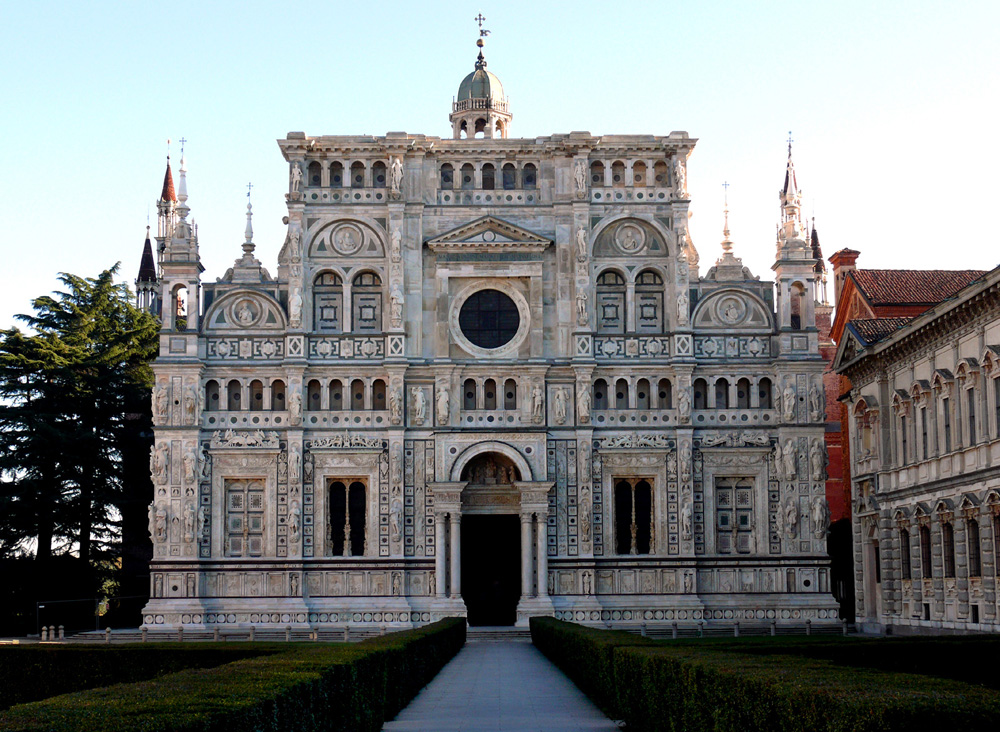
Certosa di Pavia
The Certosa di Pavia was built between the late 14th and the 15th century at the behest of Gian Galeazzo Visconti, lord of Milan. The church and convent were originally entrusted to the Carthusian community, then to the Cistercians, and for a brief period also to the Benedictines.
The idea to build a Museum of the Certosa originated in the late 19th century when restoration work began on the monument, directed by Luca Beltrami. The museum opened in 1911 with the installation created by Beltrami himself. However, it was closed the following year and permanently reopened only in 2008.
The Building
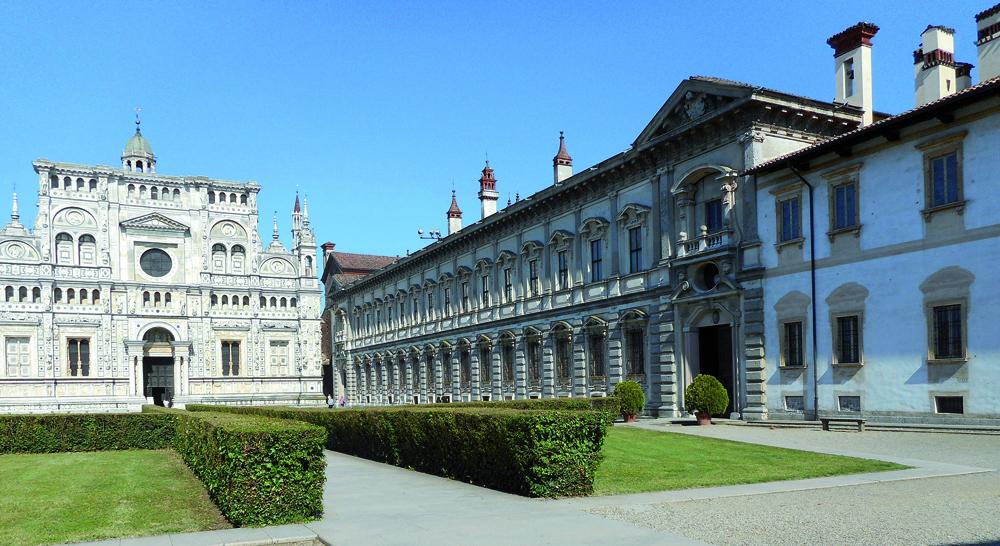
Certosa di Pavia - L'edificio
The Museum of the Certosa di Pavia is housed inside the Ducal Palace, the summer residence of the Visconti-Sforza family, which overlooks the large entrance courtyard of the Certosa. The building’s façade was modified in 1625 by the architect Francesco Maria Richini, who proposed an elegant solution, creating a linear succession of windows between pilaster strips, which give particular luminosity to the entire structure.
The Collection
The museum collection is arranged on two floors. The ground floor contains the Gipsoteca (plaster cast gallery), recently renovated and equipped with an information system, with plaster casts of the reliefs of the church façade and of other works that decorated the monument. The first floor houses the Pinacoteca (picture gallery) and the collection of sculptures, in the installation designed by Luca Beltrami, as well as the frescoed Studiolo from the second half of the 16th century.
-

Plaster cast from the sculptural original: Funerary monument of Ludovico il Moro and Beatrice d’Este
The plaster cast reproduces the upper part of the funerary monument of Ludovico il Moro and Beatrice d’Este from the marble original by Cristoforo Solari, which is now located in the transept of the church. Another example of this cast can be found at the Puškin Museum in Moscow.
-
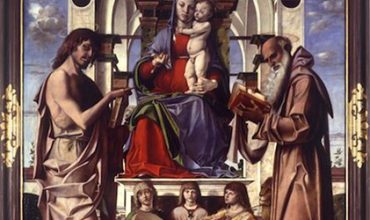
Madonna with Child on the Throne by Bartolomeo Montagna
The large panel depicting the Madonna with Child on the Throne with St. John the Baptist, St. Jerome and Music-making Angels, a work by the Vicenza painter Bartolomeo Montagna, comes from the third chapel on the left of the church. It was created around 1490 on a commission by the Carthusian monks.
-
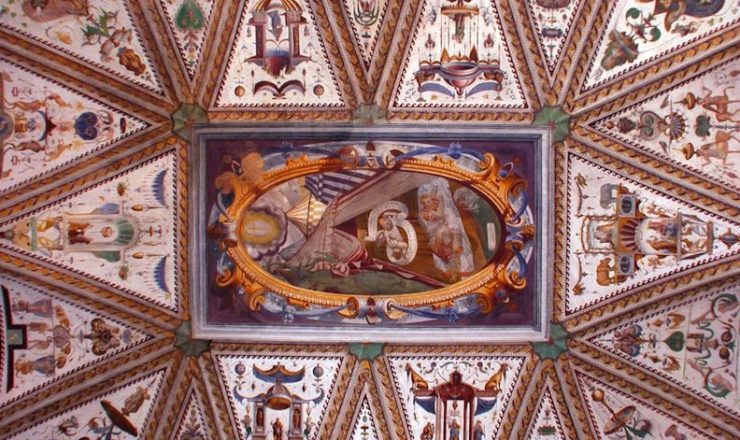
Studiolo – the vault
This splendid and almost unknown Renaissance interior is frescoed with colourful landscapes, punctuated by monstrous monumental herms with snake-like legs. The vault, decorated with spectacular grotesques, features a representation of the Dream of Constantine at the centre within a complicated elliptical frame. The faux bas-reliefs of the lunettes narrate events of different epochs: Rutila, king of the Huns; Alboin, king of the Lombards; the emperors Valente, Teodosio, and Massenzio; Avenir, king of the Indians, who repented, as told in the Book of Barlaam, for having hindered the conversion of his son, Josaphat, who had renounced the throne to lead a life of prayer.
-

St. Ambrose and St. Martin by Bernardino Luini
The two beautiful panels, mentioned in manuscripts of the 17th and 18th centuries, are generally attributed to Bernardino Luini. The two panels are considered part of a lost polyptych that was painted for the church of the Certosa or for another Carthusian property.
-
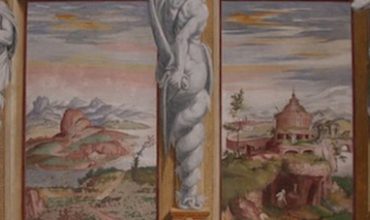
Studiolo – the walls
Each lunette corresponds in the landscape below to the story of a saintly monk or hermit: St. Jerome, St. Humbert, but also the Carthusian St. William of Fenoglio, who fought against the assailants using a donkey’s leg. Nothing certain is known about the author (or authors) of this wonderful pictorial cycle, but it could be hypothesised that it is the work of multiple artists, perhaps working at different times.
-
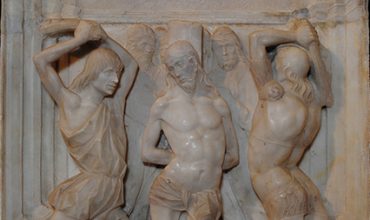
Flagellation
Marble tile by Antonio Mantegazza with a representation of the Flagellation of Christ. It belongs to a series of three, in all likelihood part of a polyptych sculpted with the Stories of the Life and the Passion of Christ, which was dismantled and re-used in the late 16th century. The architectural composition in the background shows precise references to the work of Bramante and makes it possible to date the work to the last two decades of the 15th century, while the extraordinary technique of execution recalls Donatello’s stiacciato.
Address
Viale Monumento, 4
27012 Certosa di Pavia
Ownership
Ente MiC
Tipology
No profit/donation museum, gallery